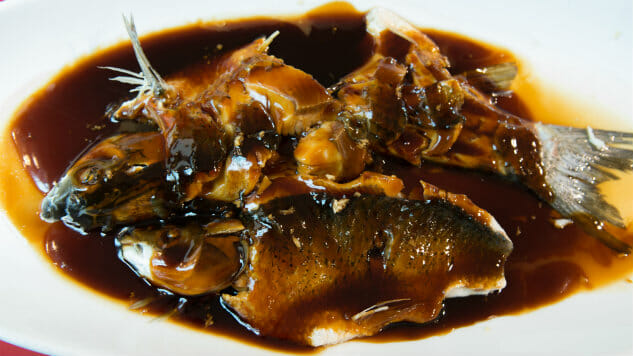
When the morning mist creeps away from Hangzhou’s West Lake, visitors get the chance to peek underneath, where pagodas poke up from fields of green tea leaves along the hill and temples seemingly float in the gray waters. Hidden in those slopes and that water are the ingredients that shape the cuisine of Hangzhou’s Zhejiang province—one of China’s eight culinary traditions.
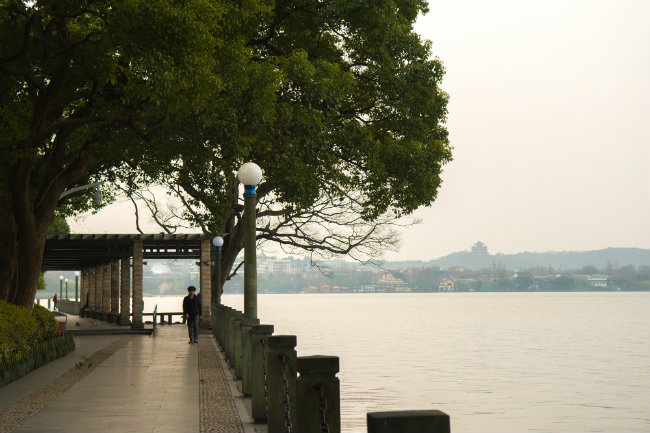
Chinese tourists crowd into the shores of the lake, a popular domestic destination, but international tourists haven’t yet caught on. With a high-speed train that cuts the trip from Shanghai down to just 45 minutes, the G20 coming in September, and Hangzhou named as one of the places to go in 2016 by both The New York Times and Travel + Leisure, that could be changing very soon. And when it does, Westerners will learn what they’ve been missing out on by skipping Hangzhou and its cuisine.
Marco Polo called Hangzhou,”City of Heaven,” remarking on its numerous markets proffering local wildlife, such as an “abundance of lake fish, varying in kind according to the season … Seeing the quantity on sale, you would imagine they could never be disposed of.” But with dishes like the ones below—and others you’ll find on the streets and in the restaurants—you’ll see how the people of Hangzhou, centuries ago and today, go through incredible quantities of meat, seafood, and local crops.
Longjing Tea Shrimp
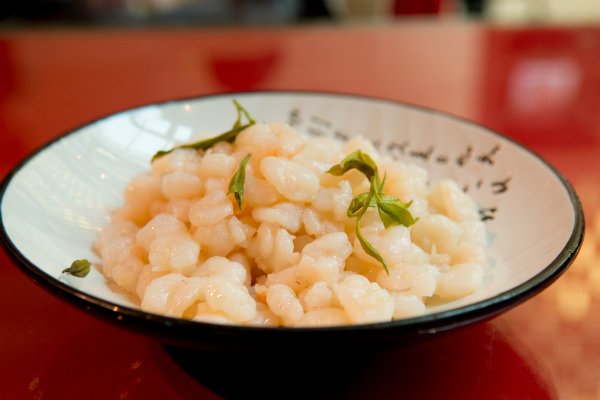
Hangzhou’s culinary reputation is built upon freshwater seafood, Dragon Well tea, and refined, elegant cooking. This dish marries all three, earning it a spot as a poster child for local cuisine. Longjing, translated as Dragon Well, tea is grown in the hills just outside Hangzhou, and many connoisseurs consider it the best tea in China—or even the world. For the dish, a few of the tea leaves are stir-fried and tossed with the local freshwater shrimp. The subtle tea flavor just barely makes itself known through the sweetness of the shrimp. Unlike fiery fish dishes from Sichuan or heavy noodle dishes from China’s north, Hangzhou’s Longjing shrimp implores the diner to look for the flavor, inspect it for subtlety and nuance. But like the girl who speaks softly, forcing suitors to lean in close and see just how smooth her skin is, the tea flavor is there—and beautiful—for those who take the time.
Drunken Shrimp
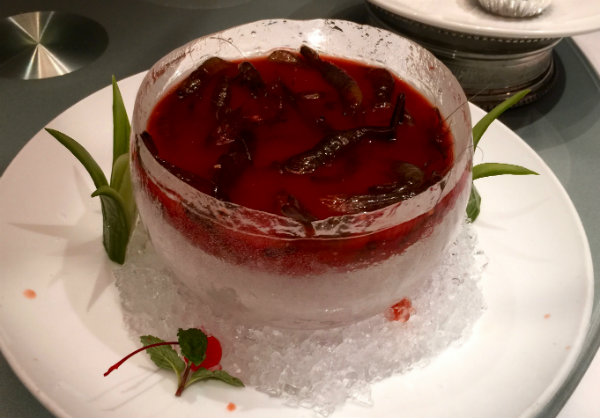
Three times during my first trip to Hangzhou, I accidentally ordered still-moving seafood. While I couldn’t complain about the freshness of the seafood, nor the taste, I wouldn’t have minded skipping the giggles of my husband’s local co-workers as they watched me face off with a drunken shrimp.
The shrimp—about the size of my pinky finger—are dropped live into liquor to drink themselves to a delicious death. Once they’re good and wasted—like you and me, they get a bit thirsty when they’re smashed—they drink up the sauce. I picked them from a photo menu, where they looked plump and pink and (most important) already dead. When they arrived, both the Chinese and Americans at the table backed away slowly. Nobody wanted to be the first to try them—especially not after someone grabbed one and put it on my plate, where it slapped its tail, splashing the red sauce all over my white plate. But then one guy took a bite. I took a bite. We pulled the heads off with our chopsticks and pulled out the meat, sweet freshwater shrimp, seasoned with the sauce they drank in as they died. It was a bit morbid—but also morbidly good.
West Lake Fish in Vinegar
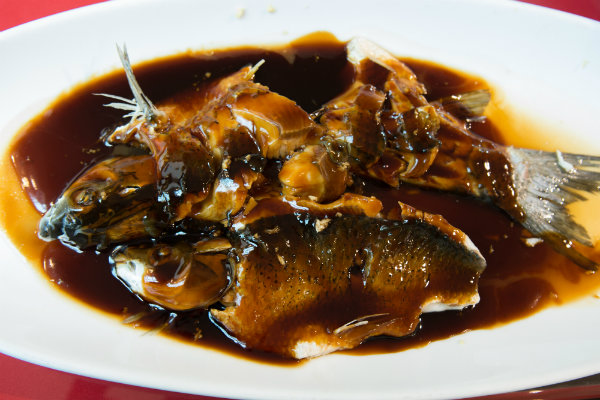
The ancient city of Hangzhou took the name of “The Culture of Fish in Rice Fields,” so it’s only appropriate that fish is still the star of the show in these parts. Hangzhou’s most famous dish, named for the city’s main attraction, is one of the few that can be found in restaurants in the U.S. Of course—as with so many traditional dishes—it’s not the same elsewhere: for starters, the steamed grass carp that serves as the base wasn’t swimming in a lake just miles away. The sauce teeters toward cloying sweetness, pulled back from the edge by a sharp sourness from the vinegar. Strong flavors dominate the dish, perhaps a reason it came to share menus with bolder Cantonese and Mandarin cuisine while its shy, retiring Zhejiang cousins stayed home.
Hangzhou Noodles

“You have to try them,” my husband’s co-workers raved of these local noodles, “They were featured on Bite of China!” A coveted spot on one of the 15 episodes of the documentary (think Planet Earth, but about food in China) crowned this busy hole-in-the-wall King of Hangzhou noodles. We wove through the city before 7 a.m. to get there before the crowds, arriving at a tiny noodle shop, just an arch carved into the front of a building with two big pots and some seating to the side. Hangzhou’s traditional noodles feature one of the regions other main crops: bamboo shotos. The simple, rich broth cradles fettuccine-like wheat noodles, with both serving as a canvas for the preserved greens and fresh bamboo to paint with vegetal brightness.
Beggar’s Chicken
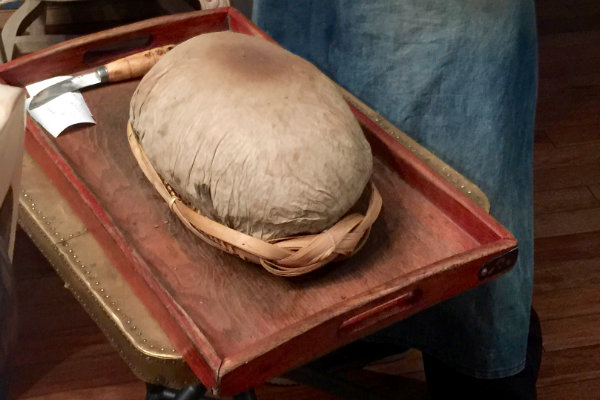
The spectacle of this dish brings it to the forefront of a Hangzhou menu, but the flavor keeps it on the table. At Hangzhou Restaurant, one of the city’s oldest and most famous, servers roll in a cart bearing what seems to be an oversized pre-historic egg. Under layers of lotus leaves and mud, inside a claypot, stews a chicken, stuffed with pork. But we couldn’t get to the hot meat-on-meat action quite yet. Like a tableside Caesar salad, bananas Foster, or crêpes Suzette, there is a ritual in serving beggar’s chicken: the server handed me a mallet. I took it and gave a ceremonial thump on the top of the oval mess. Then he took over, slicing through the equator, keeping the mess to a minimum, then pulling the top off the claypot and carving up the chicken: the proverbial dinner and a show.
These five dishes barely crack the mud-covered claypot of Hangzhou cuisine. A local museum dedicated solely to it covers more than 400 dishes, while an entirely separate museum is devoted to tea, including the regional delicacy of Longjing tea. And while West Lake, Hangzhou’s best-known attraction, is at its best in the morning (and most crowded in the afternoon), evenings in the city mean night markets and bring vendors out of the woodwork, bearing stinky tofu, egg waffles, and colorful eggshells stuffed with sticky rice: the next steps deeper down into the world of food in Hangzhou.
Naomi Tomky is a Seattle-based food and travel writer. Follow her international culinary adventures on Instagram and Twitter.